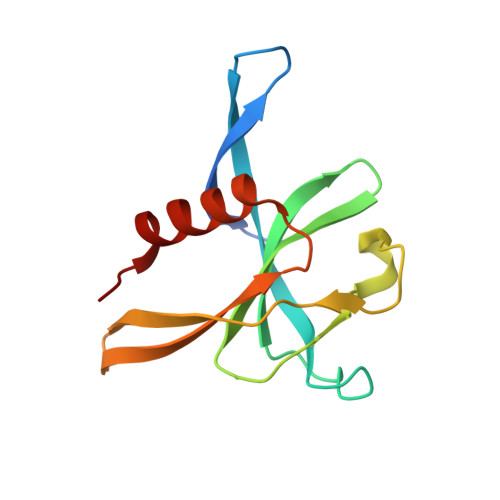Binding of a pyrimidine RNA base-mimic to SARS-CoV-2 nonstructural protein 9.
Littler, D.R., Mohanty, B., Lowery, S.A., Colson, R.N., Gully, B.S., Perlman, S., Scanlon, M.J., Rossjohn, J.(2021) J Biol Chem 297: 101018-101018
- PubMed: 34331944
- DOI: https://doi.org/10.1016/j.jbc.2021.101018
- Primary Citation of Related Structures:
7KRI - PubMed Abstract:
The coronaviral nonstructural protein 9 (Nsp9) is essential for viral replication; it is the primary substrate of Nsp12's pseudokinase domain within the viral replication transcription complex, an association that also recruits other components during different stages of RNA reproduction. In the unmodified state, Nsp9 forms an obligate homodimer via an essential GxxxG protein-interaction motif, but its ssRNA-binding mechanism remains unknown. Using structural biological techniques, here we show that a base-mimicking compound identified from a small molecule fragment screen engages Nsp9 via a tetrameric Pi-Pi stacking interaction that induces the formation of a parallel trimer-of-dimers. This oligomerization mechanism allows an interchange of "latching" N-termini, the charges of which contribute to a series of electropositive channels that suggests a potential interface for viral RNA. The identified pyrrolo-pyrimidine compound may also serve as a potential starting point for the development of compounds seeking to probe Nsp9's role within SARS-CoV-2 replication.
Organizational Affiliation:
Infection and Immunity Program, Department of Biochemistry and Molecular Biology, Biomedicine Discovery Institute, Monash University, Clayton, Victoria, Australia. Electronic address: dene.littler@monash.edu.

















